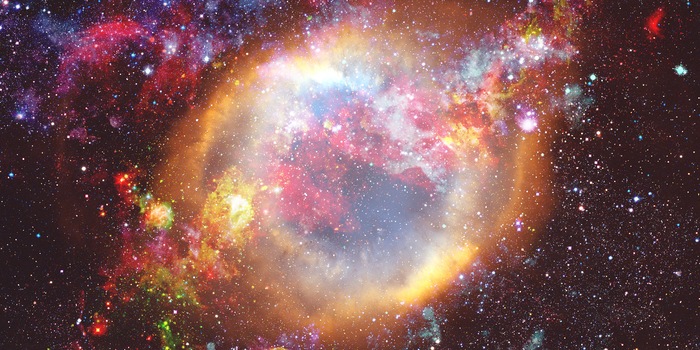
Neutrinos trigger shock wave
In theory, collapsing stars are much too dense to allow a shock wave to get to the outside. But apparently it happens after all – thanks to the most volatile of all particles.
When a massive star collapses at the end of its life cycle, it shouldn’t actually go supernova. It’s true that a neutron star quickly clusters inside the gas sphere, and incident matter bounces off its hard surface. But since the environment is extremely dense and it’s being pulled further and further inward, the outward shock wave should actually run out of breath quickly.
With this in mind, how come stars explode spectacularly at the end of their lives? Astrophysicists attribute this to neutrinos. These ghost particles rarely interact with matter and can therefore slip through the dense inferno of the collapsing star. If they collide with atomic nuclei further out, these give them a push, thus helping the shock wave to make its way out into the open.
So far, complex 3D simulations have pointed to these processes. Now, a team led by Toshiki Sato of Japan's RIKEN Research Center has also presented observational data that support the role of neutrinos. They come from the supernova remnant Cassiopeia A, which is where a star exploded about 350 years ago.
As images from the Chandra X-ray telescope now show, a fringe region of the expanding cloud contains the elements titanium and chromium. They’re created only under the most extreme conditions in a supernova: when masses of heavy atomic nuclei fuse with helium atomic nuclei. Since this also produces neutrinos, the researchers believe there is little doubt that the volatile particles temporarily supply the shock wave with energy.
Spektrum der Wissenschaft
We’re a partner of «Spektrum der Wissenschaft» (link in German) and strive to make scientific information better available to you. Follow Spektrum der Wissenschaft if you like the articles.
Original article on Spektrum.de
Experts from science and research report on the latest findings in their fields – competent, authentic and comprehensible.
From the latest iPhone to the return of 80s fashion. The editorial team will help you make sense of it all.
Show all